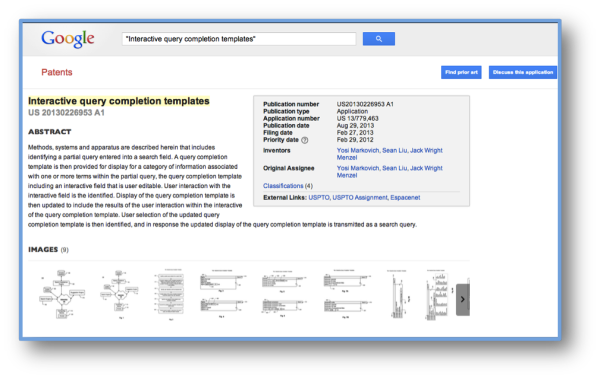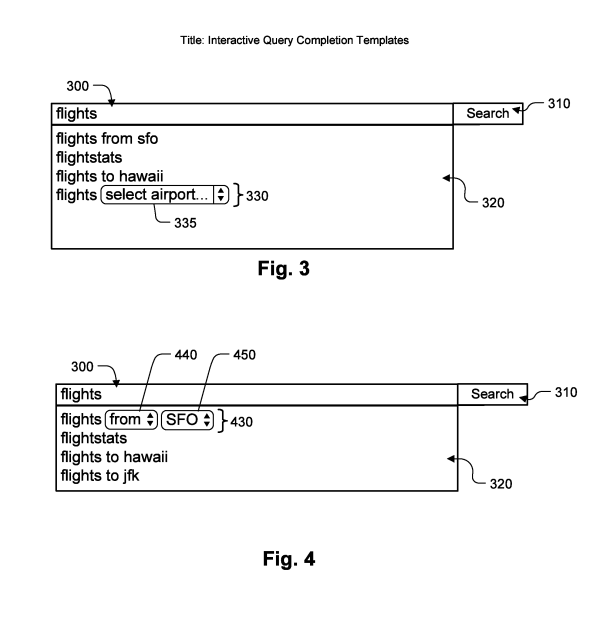5 Ways To Unlock The Benefits Of Semantic Search
Search is changing. It is now more personal, more engaging, more interactive and more predictive. SERPs no longer display just 10 blue links — they have become more useful and more visually appealing across all device types. Semantic search is at the forefront of these changes, as evidenced most recently by the launch of Google’s […]
Search is changing. It is now more personal, more engaging, more interactive and more predictive. SERPs no longer display just 10 blue links — they have become more useful and more visually appealing across all device types.
Semantic search is at the forefront of these changes, as evidenced most recently by the launch of Google’s new Hummingbird algorithm. Beginning with user intent and interpretation of the query itself, semantic technology is used to refine the query, extract entities as answers, personalize search results, predict search queries and more — providing a more interactive, conversational or dialogue-based search result.
With Hummingbird, Google is moving further along its trajectory of becoming the “Star Trek Computer,” or at least a very powerful answer engine. But how can you make sure you’re reaping the benefits of all semantic search has to offer?
5 Ways To Unlock The Benefits of Semantic Search
Understanding how semantic search works at a conceptual level — as well as understanding where it is going — is the key to your ability to leverage it. Below are five ways to unlock the benefits of semantic search.

Understanding is Key to Leverage/Unlock Semantic Search
1. Optimize For User Intent
As I wrote in my recent article about Google Hummingbird, Google is using “form based” or “template” queries to answer questions at scale in real time. You can see this evidenced clearly in a recent patent, “Interactive Query Completion Templates,” published in September. Compare Figures 3 and 4 from the patent to an actual example from Google Instant:
You can see here that the “form based query” or “template query” is expressed as:
Flights from ?loc1 to ?loc2
Where ?loc1 and ?loc2 are entities of type “city” (or “airport”).

Airport as defined in Schema.org
How might you use this information to optimize for user intent? Well, let’s say you are in the travel industry and you have offerings that would apply to someone traveling to ?loc2, (e.g., tourist attractions or some sort of event). You might want to make sure your page content includes that destination (entity or city or airport) as well as activities and items geared toward the interest of your target audience.
The patent also lists several examples of query template categories, including “language translation, stock price information, map information, navigational information, news information, weather information, travel information, or dictionary definitions.” Check out the examples below of measurement conversion.

Interactive Query Completion Templates For Measurement Conversion
The patent itself relates to information retrieval, as once the query template or form is correctly identified, the query results or answers can be easily and rapidly retrieved by the search engine (or answer engine). It is also by no means restricted to the above mentioned categories.

Google Patent: US 20130226953 A1: Interactive Query Completion Templates
So, for those so inclined, happy patent reading!
2. Align Your SEO Campaign With Your Social Media Campaign
Personalized search is retrieving accurate answers for a given user — for example, when you are at the airport, you can ask Google Now what gate your flight is departing from, what the traffic is like on the way home, etc.

Personal Search Plus Your World
Search “across my world” or “across my user profile” is also becoming more prominent. This suggests that paying attention to social search is becoming more and more critical, and that social media is playing a larger role in search results, sending strong signals to the search engines. Leveraging (and discovering) your target audience’s interest graph is key to producing content that will bring them to your website.
In a recent Search Engine Land article, Warren Lee wrote:
I recently presented at SMX East on how SEO and Social teams can no longer operate separately. Why? Because social media is playing an ever-more important role in SEO, and it has the potential to be disruptive to the status quo.
In other words, identify your social audience and their interests. Write content that covers those interests, your offerings, and the intersection thereof. You can find a great example here, detailing how Virgin leveraged big data to create an interest graph, thereby creating a more targeted content strategy.
3. Ensure You Leverage Google+ Appropriately & Fully
Google+ is critical when it comes to how Google will view your business (and you, too, if you elect to create a profile for yourself). With regard to Google+ for business, here is a great and comprehensive resource from Simply Business.

Google Plus Guide for Small Business (by Simply Business)
Also be sure to leverage rel = author and rel = publisher where appropriate. For rel = author, Google very clearly states its usage guidelines here.
4. Mark Up Your Pages With The Appropriate Semantic Markup
Ensure your webpages employ structured data markup, paying special attention to markup vocabulary from schema.org, as that is recognized by most major search engines at this point in time.
There are several great new tools currently available to assist with the process of adding this HTML markup to your pages, including various WordPress plugins and code snippet generators (including Google’s own Structured Data Markup Helper). There is also a new release of RDFace, announced at ISWC 2013 this month, with a special edition for schema.org. Feel free to give it a whirl!
5. Use Standard SEO Techniques
The standard SEO techniques that applied previously are still in play, such as:
- Optimized page load times,
- Optimized sitemaps and website architecture,
- Cross-platform optimization
The last one is more important than ever with the rise of mobile devices, especially since sites that offer a poor mobile experience may find themselves hurting in mobile rankings.
Conclusion/Takeaways
Cross pollination is key. As you can see, Social, SEO, SEM, Semantic Web/Semantic Computing need to cooperate and coexist as a synergistic team. Just as cross pollination within a technology team will accelerate the pace of innovation, cross pollination of these skills within a team will enable your team to keep pace with the necessary changes to attract your desired traffic to your website.
The end of the 10 blue links, and the move to a more media-oriented, interactive type of Semantic Search does not mean there is no more SEO. There are definitely finite mechanisms and steps an SEO team can take to optimize a website in a Semantic Search World.
The move to Question Answering systems, predictive search/queries, personalized search and a more dialogue- or conversational-based answer mechanism in the search engines simply means a change in strategy, and those who embrace the change will reap the rewards.
Additional Resources
Contributing authors are invited to create content for Search Engine Land and are chosen for their expertise and contribution to the search community. Our contributors work under the oversight of the editorial staff and contributions are checked for quality and relevance to our readers. The opinions they express are their own.
Related stories
New on Search Engine Land

